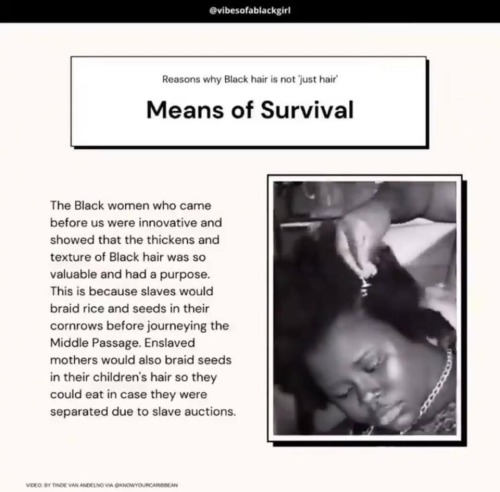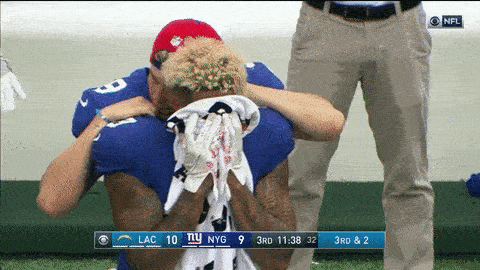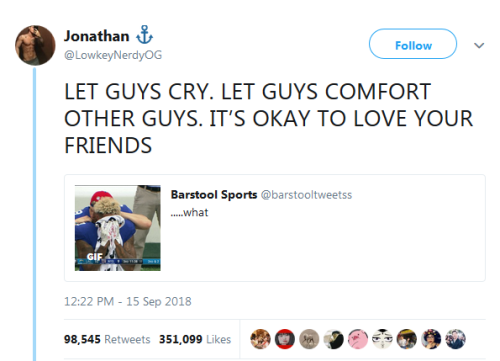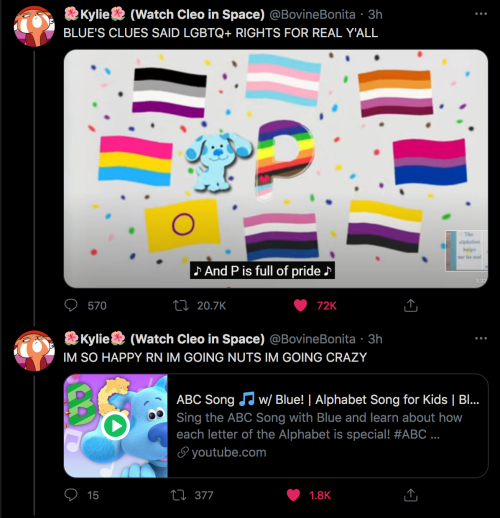Witchvspatriarchy - Witches Vs Patriarchy

More Posts from Witchvspatriarchy and Others









In many cultures, ethnic groups, and nations around the world, hair is considered a source of power and prestige. African people brought these traditions and beliefs to the Americas and passed them down through the generations.
In my mother’s family (Black Americans from rural South Carolina) the women don’t cut their hair off unless absolutely necessary (i.e damage or routine trimming). Long hair is considered a symbol of beauty and power; my mother often told me that our hair holds our strength and power. Though my mother’s family has been American born for several generations, it is fascinating to see the beliefs and traditions of our African ancestors passed down. We are emotionally and spiritually attached to our hair, cutting it only with the knowledge that we are starting completely clean and removing stagnant energy.
Couple this with the forced removal and covering of our hair from the times of slavery and onward, and you can see why so many Black women and men alike take such pride and care in their natural hair and love to adorn our heads with wigs, weaves, braids, twists, accessories, and sharp designs.
Hair is not just hair in African diaspora cultures, and this is why the appropriation and stigma surrounding our hair is so harmful.

"Tell the world, Johnny, tell them, 'Johnny Depp, I, a man, I'm a victim too of domestic violence' and see how many people believe or side with you."
Mexico was painted purple by feminists today 🥰



Today, the feminist movement took the streets of mexico, with women marching for their rights and against the epidemic of feminicides that is taking place in the country 💕💓😭




When the march began to be organized in social networks, people were "worried" and critizised the lack of empathy (from feminists) with the women (specifically) who'd have to clean the streets after the marching - the cleaning ladies showed up to show their support tho 💖♀️

This was today and I'm filled with pride, I wasn't able to participate and it breaks my heart. However tomorrow is the mexican feminist strike - just like Icelandic women did in 1975 - tomorrow, Mexican feminist groups have called for a full on strike: no women in schools, work places or even on the streets. Women won't buy or sell anything tomorrow, or actively participate in the mexican society in any way, including social media. No internet tomorrow for us. So I wont see ya until the tenth. ✊✊✊





Men not being allowed to be emotional & rampant homophobia are the reasons men commit suicide 3.5x more than women… most men are given no outlet to feel feelings. To the point that they kill themselves.


Hmmmmm.







Just a reminder that that Warner Bros. Pictures fired Johnny Depp in Fantastic Beasts: The Secrets of Dumbledore (2022) while Amber Heard was allowed to kepp working in Aquaman and the Lost Kingdom (2023).
#JusticeForJohnnyDepp

YOOOO
Ya se viene el dia de muertos y reforma se pone guapo 😍🖤💀

DAY OF THE DEATH OFFERINGS (ALTARS) IN MEXICO

The offering (altar) for the dead should have several essential elements, and each of them has their mysticism:
Water. The source of life is offered to the souls to quench their thirst after their long journey and to strengthen their return. In some cultures symbolizes the purity of the soul.
Salt. The element of purification, serves so that the body is not corrupted in its round trip for the following year.
Candles. Ancient Mexicans used ocote slices. Today the candle is used; the flame it produces means faith and hope. It is a guide for the souls so they can reach their old places and return to their home. In several indigenous communities, each candle represents a deceased, that is, the number of candles that the altar will have will depend on the souls that the family wants to receive. If the tapers or candlesticks are purple, it is a sign of mourning; and if four of these are placed on a cross, they represent the four cardinal points, so that the soul can orient itself until it finds its way and its home.
Copal and incense. The copal was offered by the natives to their gods since the incense was not yet known, it arrived with the Spanish. It is the element that sublimates prayer or praise. Fragrance of reverence. It is used to cleanse the place of evil spirits so that the soul can enter your home without any danger.
Flowers. They adorn and aromatize the place during the soul's stay, which will leave happy when it leaves, the wallflower and the nube cannot be absent because they mean purity and tenderness, and they accompany the souls of the children.
In many parts of the country it is customary to put petal paths that serve to guide the deceased from the holy field to the offering and vice versa. The leafless yellow flower of the cempasuchil (Zempoalxóchitl) is the path of color and smell that trace the routes to the souls.

Petate. Among the many uses of the petate are that of a bed, table or shroud. On this particular day it works for the souls to rest as well as a tablecloth to place the food of the offering.
Izcuintle. This one should not be missing in the altars for children, it serves as a toy so the souls of the little ones feel happy when they arrive at the banquet. The izcuintle dog is the one that helps souls cross the mighty Chiconauhuapan river, which is the last step to reach Mictlán.

Bread. Made in different ways, bread is one of the most precious items on the altar. The most common one is the “bread of the death”, a bread sprinkled with sugar that symbolizes the bones of the living.

Gollete y cañas. Related to the tzompantli. The golletes are loaves in the shape of a wheel and are placed in the offerings supported by pieces of cane. Depending on your upbringing, they may symbolize the skulls of the defeated enemies and the cañas the rods where they were threaded OR the roundness of the gollete may symbolize the circle of life and the cañas the life passing through towards dead.

Other objects to commemorate and offer to the faithful departed are:
The portrait of the person remembered, in more traditional offerings it must remain hidden, so that it can only be seen with a mirror, to imply that the loved one can be seen but no longer exists.
The image of the Souls of Purgatory, to obtain the freedom of the soul of the deceased, just in case it is found in that place, to help it get out.
Other images of saints can be placed, to serve as a means of interaction between the dead and the living, since on the altar they are synonymous with good social relations. In addition, they symbolize peace at home and the firm acceptance of sharing food, such as apples, which represents blood, and kindness through the pumpkin in tacha candy.
The mole with chicken, hen or turkey, is the favorite dish that many indigenous people from all over the country put on the altar, although they also add barbecue and consommé. These dishes are that trail of aromas, the kitchen banquet in honor of remembered beings. Good food is intended to delight the soul that visits us. It is most traditional to place foods that were the favorites of the deceased that are awaited for the night. If adult souls are expected, you may find wine on the altar.

Chocolate water. Pre-Hispanic tradition says that the guests drank chocolate prepared with the water that the deceased used to bathe, so that the visitors were impregnated with the essence of the deceased.
Another very common element are sugar skulls. Medium sugar skulls are allusion to the ever-present death. The small skulls are dedicated to the Holy Trinity and the big one to the Eternal Father.

A washbasin, soap and towel can also be placed in case the soul needs to wash its hands after the long journey.
This post follows what the INPI (National Institute of Indigenous People) says about the Mexican Day of the Dead on its official page.

-
 krokodile reblogged this · 6 months ago
krokodile reblogged this · 6 months ago -
 supremeladyoftherandom reblogged this · 11 months ago
supremeladyoftherandom reblogged this · 11 months ago -
 supremeladyoftherandom liked this · 11 months ago
supremeladyoftherandom liked this · 11 months ago -
 lightning-and-lavender-fire liked this · 1 year ago
lightning-and-lavender-fire liked this · 1 year ago -
 asexualenjolras01 liked this · 2 years ago
asexualenjolras01 liked this · 2 years ago -
 sirgwaiine reblogged this · 2 years ago
sirgwaiine reblogged this · 2 years ago -
 empresscatz15 reblogged this · 2 years ago
empresscatz15 reblogged this · 2 years ago -
 empresscatz15 liked this · 2 years ago
empresscatz15 liked this · 2 years ago -
 awkwardlyafan liked this · 2 years ago
awkwardlyafan liked this · 2 years ago -
 psi-triforce reblogged this · 2 years ago
psi-triforce reblogged this · 2 years ago -
 angeljokic liked this · 2 years ago
angeljokic liked this · 2 years ago -
 killjillthegreat reblogged this · 2 years ago
killjillthegreat reblogged this · 2 years ago -
 killjillthegreat liked this · 2 years ago
killjillthegreat liked this · 2 years ago -
 an-old-old-dead-blog liked this · 2 years ago
an-old-old-dead-blog liked this · 2 years ago -
 bugssiesbeans reblogged this · 2 years ago
bugssiesbeans reblogged this · 2 years ago -
 bugssiesbeans liked this · 2 years ago
bugssiesbeans liked this · 2 years ago -
 tinyorangepotato reblogged this · 2 years ago
tinyorangepotato reblogged this · 2 years ago -
 tinyorangepotato liked this · 2 years ago
tinyorangepotato liked this · 2 years ago -
 leaf-mealone reblogged this · 2 years ago
leaf-mealone reblogged this · 2 years ago -
 leaf-mealone liked this · 2 years ago
leaf-mealone liked this · 2 years ago -
 omegazman reblogged this · 2 years ago
omegazman reblogged this · 2 years ago -
 omegazman liked this · 2 years ago
omegazman liked this · 2 years ago -
 awkward-darkness reblogged this · 2 years ago
awkward-darkness reblogged this · 2 years ago -
 awkward-darkness liked this · 2 years ago
awkward-darkness liked this · 2 years ago -
 jedimasterkatara reblogged this · 2 years ago
jedimasterkatara reblogged this · 2 years ago -
 dyoxys-prime reblogged this · 2 years ago
dyoxys-prime reblogged this · 2 years ago -
 dyoxys-prime liked this · 2 years ago
dyoxys-prime liked this · 2 years ago -
 associate-geneva reblogged this · 2 years ago
associate-geneva reblogged this · 2 years ago -
 nodesiretogrowup liked this · 2 years ago
nodesiretogrowup liked this · 2 years ago -
 nodesiretogrowup reblogged this · 2 years ago
nodesiretogrowup reblogged this · 2 years ago -
 geekyfer liked this · 2 years ago
geekyfer liked this · 2 years ago -
 the-writer-nerd-ro reblogged this · 2 years ago
the-writer-nerd-ro reblogged this · 2 years ago -
 the-writer-nerd-ro liked this · 2 years ago
the-writer-nerd-ro liked this · 2 years ago -
 percyjacksonwriter reblogged this · 2 years ago
percyjacksonwriter reblogged this · 2 years ago -
 hellobeeswax reblogged this · 2 years ago
hellobeeswax reblogged this · 2 years ago -
 thatoneweirdidiot reblogged this · 3 years ago
thatoneweirdidiot reblogged this · 3 years ago